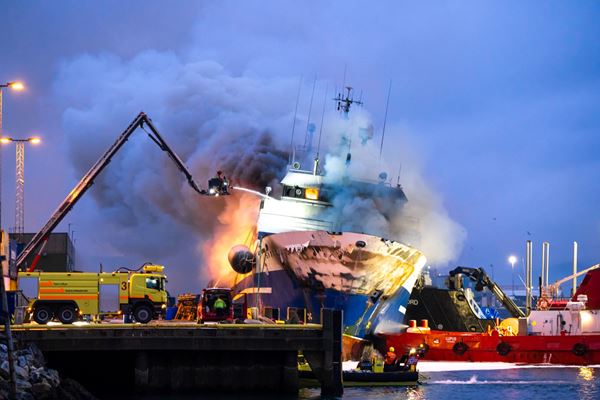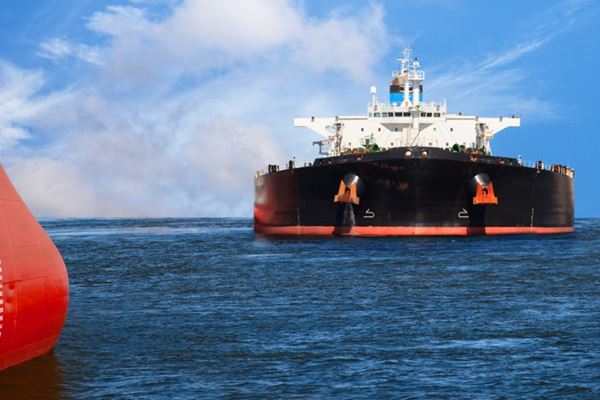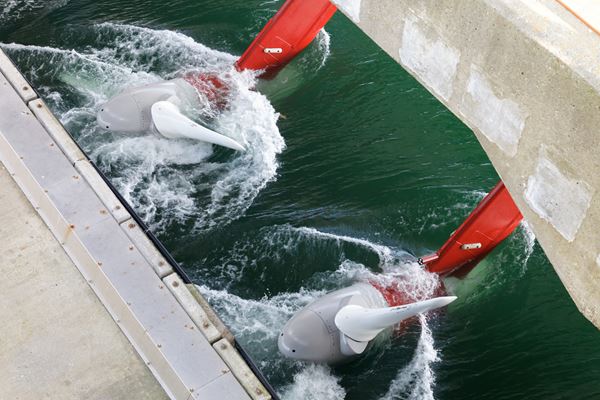BOT-3000 Tribometer Application in Marine Vessel Slips, Trips, and Falls

Slips, trips, and falls represent a significant percentage of claims for all types of marine vessels around the world. In fact, The American Club, a mutual protection and indemnity club, conducted a study in partnership with the American Bureau of Shipping (ABS), a maritime classification society, and found that approximately 50% of the Club’s claims between 2013 and 2018 were from injuries. Out of that 50%, they reported that 34% of those injuries resulted from slips, trips, and falls. On average, the study found a trip or fall typically costs $88,000 per claim and a slip $56,000 per claim. i
From recreational boats, fishing vessels, towing vessels, barges, and intercity water taxis, to the largest cruise and cargo ships in the world, potentially wet and slippery conditions combined with a moving deck can pose a danger to both passengers and crew.
Common Causes of Slips, Trips, and Falls
Slips and falls that cause injury are most common on deck, in engine rooms, and on stairs or ladders.i Typically, a number of factors overlap culminating in an accident. Pinpointing the primary contributing factor of a slip, trip, or fall is often a challenge. The most common causes of these types of accidents include:
- Behavioural related actions
- Loss of situational awareness
- Spills
- Improper footwear
- Poor lighting
- Poor housekeeping
- Unsuitable or improperly maintained deck coverings and installations.
Importance of Proper Deck Covering
When there is question involving the design, construction, or current condition of a walkway, an investigation into a slip, trip, or fall might entail a physical survey of the passage or space layout, measuring lighting conditions or analyzing the deck surface to ensure it’s in suitable condition for safe passage in a marine environment.
Proper deck covering preparation and installation is critical when ensuring a reasonable standard of care is taken by marine vessel owners and operators to prevent slips and falls. This includes ensuring the chosen deck covering has an appropriate level of slip resistance at installation for the location and its expected use. The measure of slip resistance is referred to as dynamic coefficient of friction (DCOF), with a higher DCOF equating to a more slip-resistant surface.
Deck coverings must be maintained and monitored to ensure slip resistance does not deteriorate since surfaces are known to degrade over time, whether it be from regular use, spills, or even harsh chemicals and abrasion while cleaning. In a marine environment, this holds especially true as the accumulation of fresh or salt water, combined with UV light on open deck surfaces, can be especially erosive.
BOT-3000 Tribometer Application
To determine a deck covering’s DCOF, the BOT-3000 Tribometer is the preferred test apparatus. A tribometer is the testing device used in tribology, the study of friction, lubrication, and wear between moving surfaces. Following ANSI A326.3 American National Standard Test Method for Measuring Dynamic Coefficient of Friction of Hard Surface Flooring Materials, dynamic coefficients of friction on wet and dry surfaces can be measured by the BOT-3000. ii This standardized procedure is an internationally accepted and standardized measurement technique for friction testing of hard surfaces and provides acceptable wet DCOF values for flooring and deck coverings in a number of different applications.
The BOT-3000 uses a standard rubber “test foot,” similar to the rubber found in many shoe soles and tires, to ensure a fair comparison of slip resistance between deck covering types. While all shoes (or bare feet) do not provide the same traction, using a standard rubber “test foot” ensures a fair comparison between all types of surfaces.
In addition to the guidance provided in ANSI A326.3, ASTM F1166 Standard Practice for Human Engineering Design for Marine Systems, Equipment, and Facilities is often referenced. When compared to standards found in ANSI A326, ASTM F1166 requires greater slip resistance for all surfaces, accounting for ship motions and higher likelihood of deck wetness in a marine environment. While the specification referenced applies directly to crew, there is a maritime law precedent to extend this requirement to apply to passengers. iii
The table below summarizes recommended wet DCOF values for a number of different surface conditions. Fairly so, dry surfaces are always assumed to have higher slip resistance than the same surface when wet and as such, testing criteria is typically for a wet surface.
The information garnered in DCOF and slip resistance testing can help inform a qualified Naval Architect if a surface or walkway has potential design defects at the time of the accident. When combined with a survey of the walkway or space in accordance with accepted design standards, contributing factors in a slip, trip, or fall case may be quickly established. For assistance on a marine slip, trip, or fall claim, Envista’s Marine Practice is well-equipped with the tools and know-how to answer the call.
Sources:
i ABS, The American Club, and Lamar University College of Engineering, “Maritime Slips, Trips, Falls, and Lifting Injuries,” 2018.
ii ANSI A326.3 American National Standard Test Method for Measuring Dynamic Coefficient of Friction of Hard Surface Flooring Materials
iii ASTM F1166-07 Standard Practice for Human Engineering Design for Marine Systems, Equipment, and Facilities
Our experts are ready to help.




